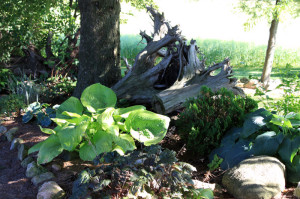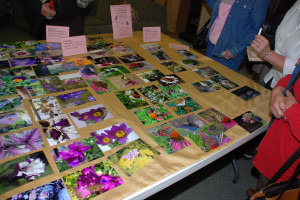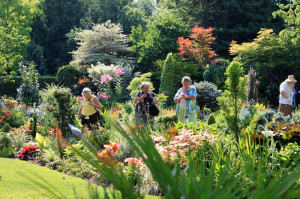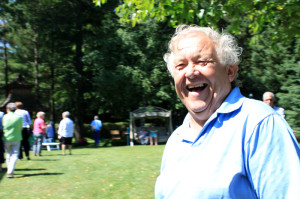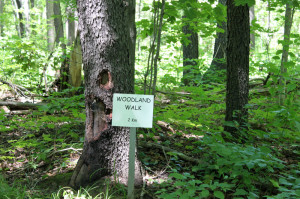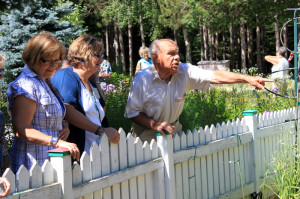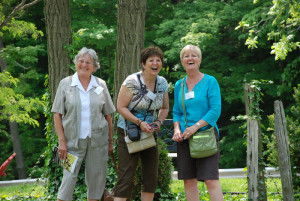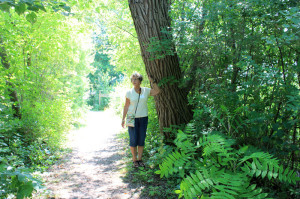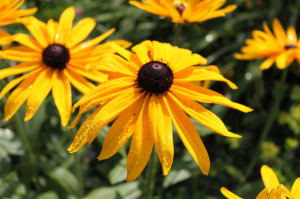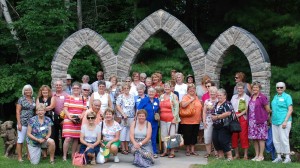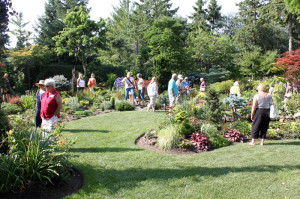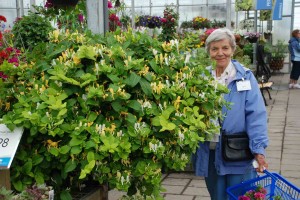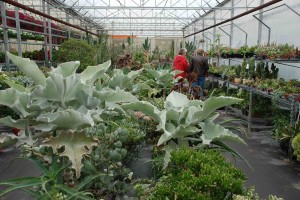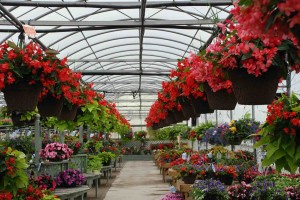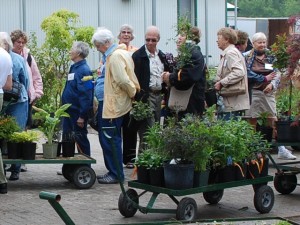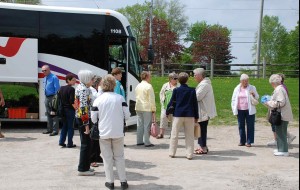It’s Still Just Dirt – the Tillsonburg News, March 19, 2014
by Penny Esseltine
June and Roy Stewart live about 15 minutes south of Tillsonburg and on their property they grow vegetables in a very large space as well as all kinds of flowers. June grows most of the plants from seed. She says she started this about 20 years ago because it’s cheaper to buy seeds than to buy plants.
June starts the seeds in flats on tables in her basement using Pro-Mix as the growing medium. The Stewarts buy Pro-Mix by the bale at Underhill Farm Supplies. June says she uses two to three bales of this each year to fill about 12 flats for flowers and 12 for vegetables.
Right now she has lights on all of the time, a mix of fluorescent tubes and incandescent bulbs. They warm the room until the seeds germinate. After that she will have the lights on about 12 hours and off about 12 hours each day to simulate natural light. The flats are covered with plastic domes which keep the condensation in. If the flats seem dry she mists them using a watering can. The lights are positioned 12” to 18” above the domes.
June has already planted seeds for mauve and purple petunias, trailing and upright lobelia, eggplant, burgundy beans, honey snack carrots, bolero peas, radishes, Spanish onion, Brussels sprouts, dwarf marigolds, corn, and late cabbage. Around the first of April she will move them into the greenhouse that Roy built. Seeds for tomatoes, peppers and onions will be started right in the greenhouse. Then gradually all of the plants will be moved outside into the gardens around the 24th of May.
Sometimes, June says, she has trouble with plants damping off or rotting below the ground. She went on the internet to see what is recommended to prevent this and chamomile tea was one of the suggestions. Before planting seeds this year June wet the Pro-Mix in the flats with chamomile tea.
Petunias, peas, and beans are some of the easiest seeds to grow June says. Blue poppies are very difficult. June says she has tried blue poppies four times with seeds she brought home from Kew Gardens, from Scotland, and from the Stratford Garden Festival. The last blue poppy seeds June tried came from Horticultural Society friends Marian Smith and Joan Massicotte. No matter where the seeds have come from June says she hasn’t been successful with blue poppies yet. Sometimes carrots and parsnips can be difficult. “For two years in a row”, June says, “I have planted parsnip seeds right into the ground but they never came up.”
This year June is trying eggplant. Her granddaughter is getting married and would like baskets with gourds and purple eggplants for the decor.
June says that about half of the seeds she plants she has harvested from her garden the previous year, and the other half she buys, often through seed catalogues from Stokes, Veseys, McFayden’s, or the Ontario Seed Company (OSC).
Some of the seeds that June bought this year are Crazy Daisy Chrysanthemums, heliotrope and loose-head flowering purple cabbage.
Among the seeds she has harvested are coneflower, ligularia, lavatera, lupins, datura, castor beans, ornamental beans, Korean bellflower and non-climbing clematis.
If you are harvesting seed in the fall June says to make sure that they are dry. “Seeds that are brown are ripe but if they’re white they’re not.” Put the seeds in pill bottles with a little bit of silica to keep them dry.
With everything that June grows from seed she has enough plants to fill her flower gardens as well as a vegetable garden that Roy estimates measures about 100 yards one way and 20 yards the other. June says that she plants the rows fairly far apart so that Roy can keep the weeds down between the rows with a gas-powered Rototiller. For the flower gardens Roy brings in a truckload of mulch to keep the weeds down and the water in.
For the Horticultural Society’s Annual Garden Auction on May 20 June is growing hibiscus trionum seeds called Simply Love. The flowers will be white with a chocolate purple centre.
June says what she enjoys most from planting seeds is that it’s just fun. “It’s fun to watch the plants grow and you get a whole lot of plants.” For those who are looking to venture into the world of growing plants from seed June’s advice is to “start small.” Roy on the other hand says, “don’t.” Both agree the success in growing seeds in really a matter of “by guess and by gosh” although temperature and sunshine are especially critical at the greenhouse stage.
Next Meeting
The Tillsonburg Horticultural Society will meet on Tuesday, April 1 at 7:30 p.m. in the Senior Centre Auditorium at the Tillsonburg Community Centre. Our guest speaker is landscape designer and horticultural consultant Denise Hodgins who will talk about “Strangers in Your Lawn and Garden”.
For more information about the Tillsonburg Horticultural Society visit our website at tillsonburghorticultural.ca.

